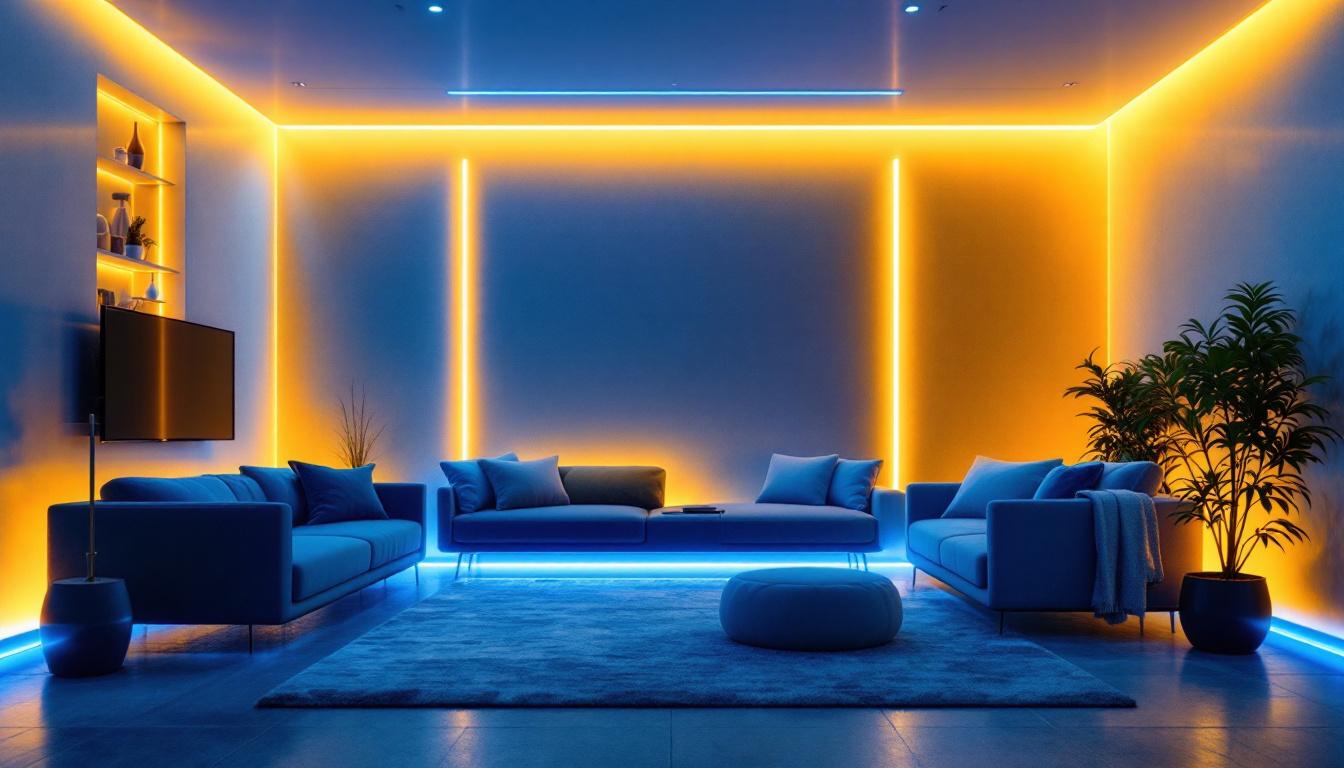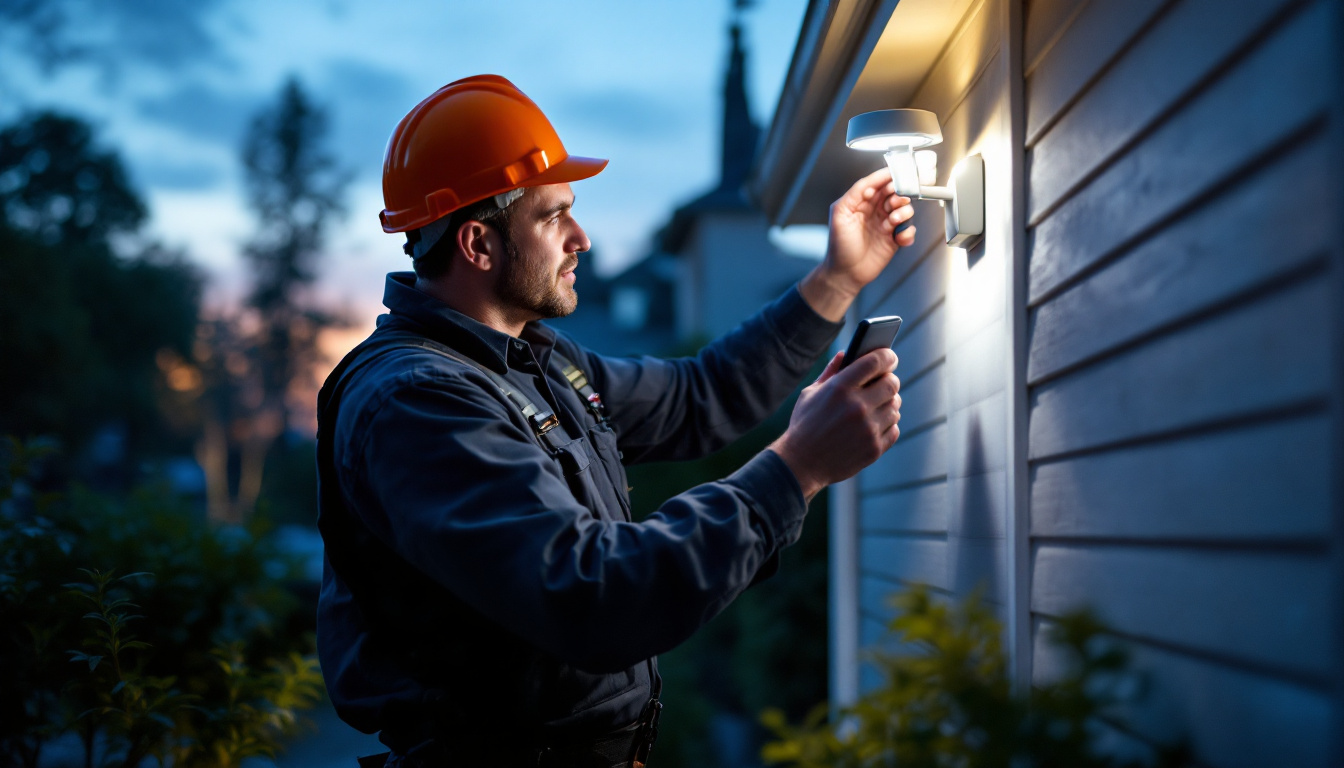
In the ever-evolving world of lighting solutions, LED strip lights have emerged as a versatile and efficient option for both residential and commercial applications. For lighting contractors, understanding the intricacies of LED strip lighting is essential to providing clients with the best solutions tailored to their needs. This guide aims to equip contractors with the knowledge required to effectively integrate LED strip lights into their projects.
LED strip lights, also known as LED tape lights, are flexible circuit boards populated with light-emitting diodes (LEDs). They come in various lengths, colors, and brightness levels, making them suitable for a wide range of applications. The flexibility and adhesive backing of these strips allow for easy installation in a variety of settings, from accent lighting to task lighting. Their versatility has made them increasingly popular in both residential and commercial environments, where they can be used to enhance aesthetics and functionality.
In addition to their practical applications, LED strip lights are also energy-efficient, consuming significantly less power than traditional incandescent or fluorescent lighting options. This energy efficiency not only reduces electricity bills but also contributes to a lower carbon footprint, making them an environmentally friendly choice. Furthermore, the longevity of LED technology means that these lights can last for tens of thousands of hours, minimizing the need for frequent replacements and maintenance.
There are several types of LED strip lights available on the market, each designed for specific applications. Understanding these types can help contractors choose the right product for their clients. The variety of options allows for customization based on the unique needs of each project, ensuring that the lighting solution is both effective and aesthetically pleasing.
When selecting LED strip lights, several key features should be considered to ensure optimal performance and longevity. These include:
Additionally, it is important to consider the power supply and installation requirements for LED strip lights. Many strips require a specific voltage, typically 12V or 24V, and using the correct power supply is crucial for optimal performance. Moreover, installation can vary based on the type of strip and the intended application; some may require soldering or connectors, while others can be easily cut to size and adhered directly to surfaces. Understanding these installation nuances can help streamline the process and ensure a professional finish.
Proper installation is crucial for the performance and longevity of LED strip lights. Here are some best practices that lighting contractors should follow to ensure a successful installation.
Before beginning the installation, thorough planning is essential. This includes measuring the installation area, determining the power requirements, and selecting the appropriate LED strip type. Contractors should also consider the layout and design to maximize the visual impact of the lighting.
Additionally, ensuring that the surface where the strips will be mounted is clean and dry is vital. Dust, grease, or moisture can affect the adhesive backing and lead to premature failure of the installation.
LED strips require a compatible power supply to function correctly. Contractors need to calculate the total wattage required for the LED strips being installed and select a power supply that can accommodate this load. It’s advisable to choose a power supply with a slightly higher wattage rating than the total load to ensure reliability.
Furthermore, using a power supply with a dimming feature can enhance the versatility of the lighting, allowing clients to adjust brightness levels according to their preferences.
Proper wiring is crucial for the safety and functionality of LED strip lights. Contractors should use the appropriate gauge of wire to handle the current and ensure secure connections. Soldering or using connectors designed for LED strips can provide reliable connections that minimize voltage drop.
For longer runs of LED strips, it may be necessary to use multiple power feeds to maintain consistent brightness along the entire length. This is particularly important in larger installations where voltage drop can lead to uneven lighting.
LED strip lights are incredibly versatile and can be used in a variety of applications. Understanding these applications can help contractors propose innovative solutions to their clients.
In residential settings, LED strip lights can enhance the ambiance of various spaces. They are commonly used for:
In commercial environments, LED strip lights serve both functional and decorative purposes. Common applications include:
One of the primary advantages of LED strip lights is their energy efficiency. Compared to traditional incandescent or fluorescent lighting, LED strips consume significantly less power while providing the same or greater levels of brightness.
LED strip lights have a long operational lifespan, often lasting up to 50,000 hours or more. This longevity reduces the frequency of replacements, contributing to lower maintenance costs for clients. For contractors, promoting the long lifespan of LED technology can be a strong selling point.
Using LED strip lights also aligns with sustainability goals. They contain no harmful substances like mercury, which is found in some traditional lighting options. Additionally, their energy efficiency helps reduce carbon footprints, making them an environmentally friendly choice for clients concerned about sustainability.
While LED strip lights offer numerous benefits, contractors may encounter challenges during installation or application. Understanding these challenges and their solutions is essential for successful project execution.
LEDs generate heat, and excessive heat can shorten their lifespan and affect performance. Proper heat management is crucial, especially in enclosed spaces. Contractors should consider using heat sinks or ensuring adequate ventilation to dissipate heat effectively.
Color consistency can be an issue, especially when mixing different batches of LED strips. Contractors should source all materials from the same manufacturer to ensure uniformity in color and brightness. Additionally, using strips with a higher binning standard can help maintain color consistency across installations.
The lighting industry is continually evolving, with new technologies and trends emerging regularly. Staying informed about these trends can help contractors remain competitive and provide cutting-edge solutions to their clients.
Smart lighting technology is on the rise, and LED strip lights are increasingly being integrated into smart home systems. This allows users to control their lighting via mobile apps or voice commands, providing convenience and enhanced functionality.
Contractors should familiarize themselves with smart lighting options and be prepared to offer solutions that incorporate these technologies, enhancing the overall value of their services.
Advancements in LED technology are leading to improved color and brightness control. New products with tunable white options allow users to adjust color temperature throughout the day, promoting better circadian rhythms and enhancing well-being.
Contractors should keep an eye on these advancements and consider how they can be integrated into current projects to meet evolving client demands.
LED strip lights offer a wealth of opportunities for lighting contractors looking to enhance their service offerings. By understanding the types, applications, and best practices associated with LED strip lighting, contractors can provide clients with innovative, energy-efficient solutions that meet their specific needs. As the industry continues to evolve, staying informed about new technologies and trends will be essential for maintaining a competitive edge.
Incorporating LED strip lights into projects not only enhances aesthetics but also contributes to sustainability goals and energy efficiency. By embracing this technology, lighting contractors can position themselves as leaders in the field, ready to meet the demands of a dynamic market.
Ready to elevate your lighting projects with the efficiency and versatility of LED strip lights? Look no further than LumenWholesale for all your lighting needs. Our extensive range of spec-grade lighting products is designed to meet the highest industry standards, ensuring you deliver exceptional results to your clients. With unbeatable wholesale prices and the convenience of free shipping on bulk orders, you can trust LumenWholesale to provide premium lighting solutions that combine quality, affordability, and ease. Don’t let inflated markups dim your project’s potential. Choose LumenWholesale and experience the best value in lighting today. Visit our selection at Wholesale Lighting at the Best Value and make the smart choice for your lighting contracting business.

Discover expert tips and innovative strategies for lighting contractors to master the installation of new can lights.

Discover how LED reels are revolutionizing lighting design and installation with their versatility, energy efficiency, and innovative applications.

Discover the comprehensive guide to motion activated lights tailored for lighting contractors.

Discover expert insights from top lighting contractors on the innovative light switch outlet.